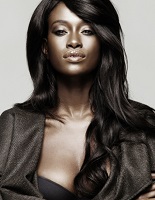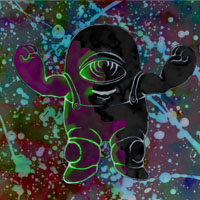|
- Getting Started
- Help
- Master Lists
- Useful Links
- Features
[Skill] Dance
(This is a thread from Mizahar's fantasy role play forums. Why don't you register today? This message is not shown when you are logged in. Come roleplay with us, it's fun!)This is where all lore articles are created, edited, noted on, and basically worked up. Feel free to comment, but please do so in the Lore Discussion forum, not here. Remember these lore articles are all WIP. Once the authors feel they are ready to be posted for Peer Review, they can be moved to the Peer Review forum. Lore articles should be a complete first draft before they goe to Peer Review.
Moderator: Scribes
[Skill] Dance
![]() by Sayana on March 8th, 2015, 5:21 am
by Sayana on March 8th, 2015, 5:21 am
Last edited by Sayana on June 19th, 2015, 4:28 pm, edited 3 times in total.
-

Sayana - Dancing in the rain...
- Posts: 1938
- Words: 1543550
- Joined roleplay: September 22nd, 2014, 12:38 am
- Location: Sunberth
- Race: Eypharian
- Character sheet
- Storyteller secrets
- Scrapbook
- Journal
- Plotnotes
- Medals: 8
-


-


-


-


[Skill] Dance
![]() by Sedge on March 23rd, 2015, 12:34 pm
by Sedge on March 23rd, 2015, 12:34 pm
Proposal Accepted
I really like the attention you're giving to racial and regional dances in this proposal. I look forward to reading the full writeup!
[Skill] Dance
![]() by Sayana on April 13th, 2015, 4:41 pm
by Sayana on April 13th, 2015, 4:41 pm
|
Last edited by Sayana on April 13th, 2015, 4:54 pm, edited 1 time in total.
-

Sayana - Dancing in the rain...
- Posts: 1938
- Words: 1543550
- Joined roleplay: September 22nd, 2014, 12:38 am
- Location: Sunberth
- Race: Eypharian
- Character sheet
- Storyteller secrets
- Scrapbook
- Journal
- Plotnotes
- Medals: 8
-


-


-


-


[Skill] Dance
![]() by Sayana on April 13th, 2015, 4:44 pm
by Sayana on April 13th, 2015, 4:44 pm
|
-

Sayana - Dancing in the rain...
- Posts: 1938
- Words: 1543550
- Joined roleplay: September 22nd, 2014, 12:38 am
- Location: Sunberth
- Race: Eypharian
- Character sheet
- Storyteller secrets
- Scrapbook
- Journal
- Plotnotes
- Medals: 8
-


-


-


-


[Skill] Dance
![]() by Sayana on April 13th, 2015, 4:46 pm
by Sayana on April 13th, 2015, 4:46 pm
|
-

Sayana - Dancing in the rain...
- Posts: 1938
- Words: 1543550
- Joined roleplay: September 22nd, 2014, 12:38 am
- Location: Sunberth
- Race: Eypharian
- Character sheet
- Storyteller secrets
- Scrapbook
- Journal
- Plotnotes
- Medals: 8
-


-


-


-


[Skill] Dance
![]() by Sayana on April 13th, 2015, 4:48 pm
by Sayana on April 13th, 2015, 4:48 pm
|
-

Sayana - Dancing in the rain...
- Posts: 1938
- Words: 1543550
- Joined roleplay: September 22nd, 2014, 12:38 am
- Location: Sunberth
- Race: Eypharian
- Character sheet
- Storyteller secrets
- Scrapbook
- Journal
- Plotnotes
- Medals: 8
-


-


-


-


[Skill] Dance
![]() by Sayana on June 19th, 2015, 4:24 pm
by Sayana on June 19th, 2015, 4:24 pm
|
-

Sayana - Dancing in the rain...
- Posts: 1938
- Words: 1543550
- Joined roleplay: September 22nd, 2014, 12:38 am
- Location: Sunberth
- Race: Eypharian
- Character sheet
- Storyteller secrets
- Scrapbook
- Journal
- Plotnotes
- Medals: 8
-


-


-


-


[Skill] Dance
![]() by Ball on July 15th, 2015, 12:05 pm
by Ball on July 15th, 2015, 12:05 pm
Hey Say: quick question:
After years of training as a tap dancer until my teens and then watching shows like Dancing with the Stars and So You Think You Can Dance?.... Aabout the techniques of trained dancing. One of the biggest things usually brought up is about the 'line' of a person's body, the straight line that a person's body seems to be bisected by as a show of balance and form.
Would you be adding techniques and such?
It makes mention of 'line' here in this defination I foundon the ABT.org website (American Ballet Theatre): Ligne [LEEN-yuh] (Line.) The outline presented by a dancer while executing steps and poses. A dancer is said to have a good or bad sense of line according to the arrangement of head, body, legs and arms in a pose or movement. A good line is absolutely indispensable to the classlcal dancer.
I just had to ask about it.
After years of training as a tap dancer until my teens and then watching shows like Dancing with the Stars and So You Think You Can Dance?.... Aabout the techniques of trained dancing. One of the biggest things usually brought up is about the 'line' of a person's body, the straight line that a person's body seems to be bisected by as a show of balance and form.
Would you be adding techniques and such?
It makes mention of 'line' here in this defination I foundon the ABT.org website (American Ballet Theatre): Ligne [LEEN-yuh] (Line.) The outline presented by a dancer while executing steps and poses. A dancer is said to have a good or bad sense of line according to the arrangement of head, body, legs and arms in a pose or movement. A good line is absolutely indispensable to the classlcal dancer.
I just had to ask about it.
Avatar CreditsMy lovely Avatar was drawn and created by the most awesome Nivel
I will be handling all Ball related posts on Mondays @ 1800 my time *
Graders Please Note :
As Ball is getting closer and closer to maxing out Pyken as a skill, I would like to request that in places where Ball is not doing enough to constitute Pyken XP if Pyken technique lores could be issued instead.
Examples of proper XP level for Pyken would be: Ball developing or refining his technique by adding new thing against an actual moving target, not a dummy.
The use of basic skills alone are not enough to accomplish XP at Ball's current level of Pyken.
Thank you.
Examples of proper XP level for Pyken would be: Ball developing or refining his technique by adding new thing against an actual moving target, not a dummy.
The use of basic skills alone are not enough to accomplish XP at Ball's current level of Pyken.
Thank you.
I will be handling all Ball related posts on Mondays @ 1800 my time *
-

Ball - Ser Ball -- Pycon Knight of Syliras
- Posts: 1323
- Words: 460478
- Joined roleplay: January 31st, 2012, 4:52 pm
- Location: Syliras
- Race: Pycon
- Character sheet
- Storyteller secrets
- Scrapbook
- Journal
- Plotnotes
- Medals: 3
-


-

[Skill] Dance
![]() by Sayana on May 8th, 2016, 3:38 pm
by Sayana on May 8th, 2016, 3:38 pm
|
-

Sayana - Dancing in the rain...
- Posts: 1938
- Words: 1543550
- Joined roleplay: September 22nd, 2014, 12:38 am
- Location: Sunberth
- Race: Eypharian
- Character sheet
- Storyteller secrets
- Scrapbook
- Journal
- Plotnotes
- Medals: 8
-


-


-


-


[Skill] Dance
![]() by Sayana on May 8th, 2016, 3:47 pm
by Sayana on May 8th, 2016, 3:47 pm
|
-

Sayana - Dancing in the rain...
- Posts: 1938
- Words: 1543550
- Joined roleplay: September 22nd, 2014, 12:38 am
- Location: Sunberth
- Race: Eypharian
- Character sheet
- Storyteller secrets
- Scrapbook
- Journal
- Plotnotes
- Medals: 8
-


-


-


-


11 posts • Page 1 of 2 • 1, 2
Who is online
Users browsing this forum: No registered users and 0 guests